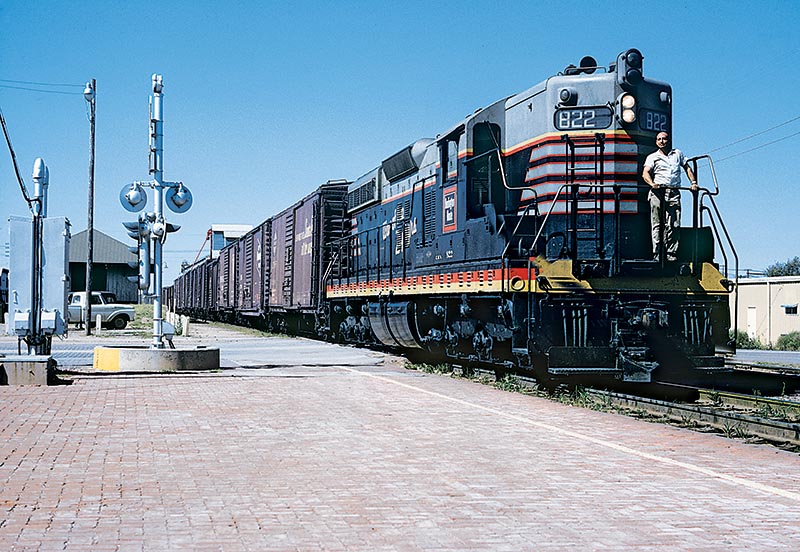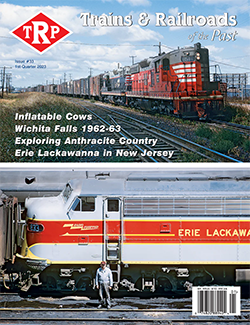 by Walter A. Appel/photos by the author
by Walter A. Appel/photos by the author
Heat! It hit me between my eyes as I stepped off Fort Worth & Denver Railway Train 1 after an overnight journey south from Denver in a comfortable roomette. It was the first week of August 1962 in my second month as a second lieutenant in the United States Air Force and I was on my way to attend Transportation Officer School at Sheppard Air Force Base near Wichita Falls, Texas. This city is in the north central part of the state, about 12 miles south of the Oklahoma border. The trip originated at Stead AFB near Reno, Nev., where I began my Air Force service in June of 1962 after arriving on Southern Pacific Train 101, the west bound City of San Francisco. Nevada got warm during the day, but it was nothing compared to Texas.
I had left Reno on Train 102 for Denver and a connection with the Colorado & Southern/Fort Worth & Denver to Wichita Falls. It was my second long distance trip via rail. My first was two months earlier when I was fortunate to be able to cross the country from Newark, N.J., via Pennsylvania Railroad Train 31, The Spirit of St. Louis and the Wabash/Southern Pacific City of Kansas City Train 209-9 to Reno.
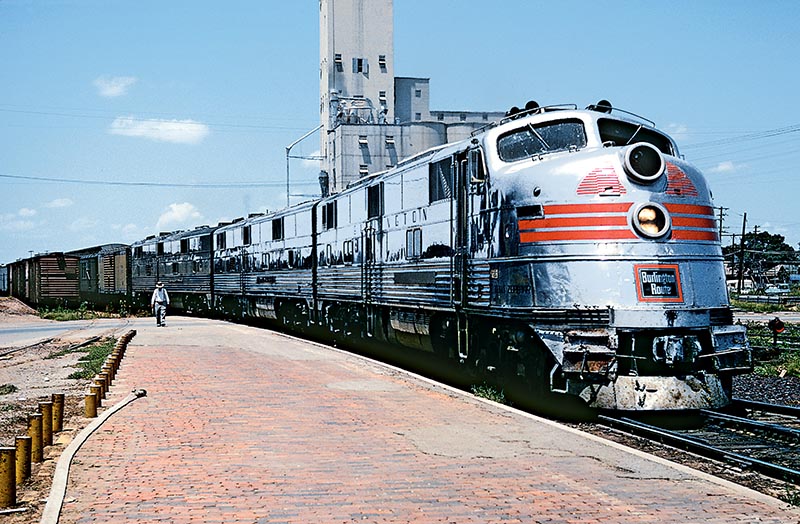
ABOVE: Fort Worth & Denver Train 1, the Texas Zephyr, glides into the Wichita Falls, Texas, station behind an A-B-B set of spotless 2000-horsepower E5’s in late August 1962. All ten of the E5’s carried a name in addition to their numbers, and all of the names were two words, beginning with “Silver.” “Silver King,” E5A #9906A, was the class unit. The 9952A, shown here, was originally named “Silver Pilot” and carried the number 9911A. In this photo it wears “Texas Zephyr” lettering. Today this diesel is owned and operated by the Illinois Railway Museum in its original paint scheme.
After completing Transportation Officer School, I was retained as an instructor at the Air Training Command base and spent the next 14 months in Texas giving this Jersey Boy the opportunity to observe and photograph the local railroads. Prior to my arrival at Wichita Falls, I did not own a car. While attending Transportation Officer School, I purchased a used 1957 Ford Fairlane 500 that was amply powered by a police interceptor V8, thanks to a loan from the Sheppard Air Force Base credit union. Now I had the ability to quickly move around the area and do some rail photography in grand Texas style.
The Fort Worth & Denver, part of the Burlington family, was the principal road in town. The Missouri-Kansas-Texas also served Wichita Falls via a secondary line originating at Whitesboro, Texas, and extending to Keyes, Oklahoma. The Frisco and the Quanah, Acme & Pacific were also within striking distance. My purchase of the Ford that summer enabled me to roam the area and photograph trains in my free time.
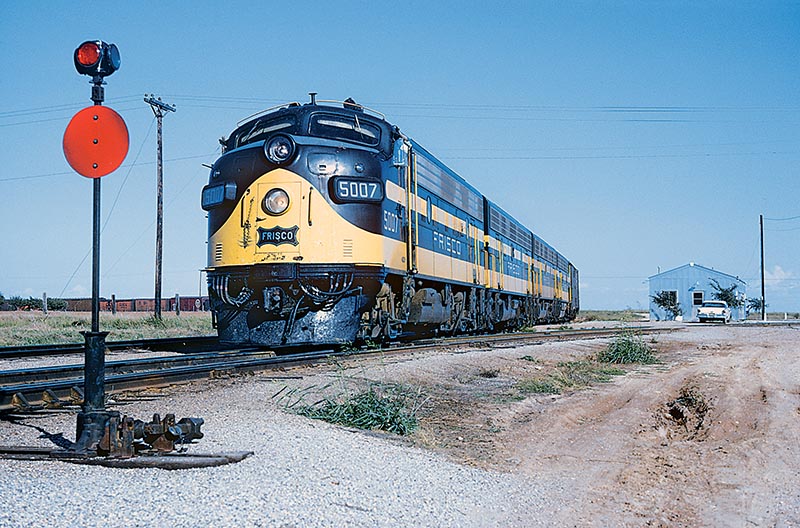
ABOVE: On the outskirts of Quanah, Frisco F3A #5007 heads up westbound train 435, known as The Flash, during October 1962. Frisco power will run through to Floydada, where the consist will be turned over to the Santa Fe. This is the crew change point where QA&P employees take control of the train.
One of my first destinations was the Katy railroad yard in town. The Katy was an interesting regional railway with a fascinating roster of motive power. After emerging from my auto at their Wichita Falls yard, I began photographing the locomotives and structures in the area. It did not take but a few minutes until I was approached by a gentlemen in a white shirt, tie, and a fedora, obviously a railway official. He demanded to know what I was doing on the property. I explained I was a railfan and just wanted to take some photos. Apparently there was a labor dispute in progress and he was suspicious of me being a union man. I produced my Air Force ID and New Jersey drivers license, which appeased him, and I was allowed to continue filming the MKT.
The MKT originally reached Wichita Falls via the Wichita Falls Railway, which was chartered in 1894. The WFRY completed its 18-mile line from Wichita Falls to Henrietta, Texas, in May 1895 to connect with the MKT and open up routes to markets for the agriculture and oil products from the area producers to national markets. The local railway never owned or operated any trains, but leased the line to the Katy and was eventually absorbed into the Missouri-Kansas-Texas.
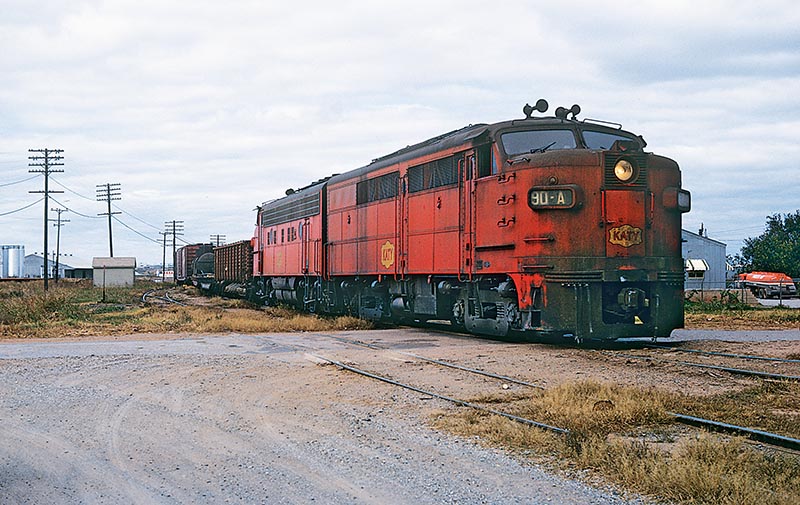
ABOVE: Missouri-Kansas-Texas Alco FA1 #90A slowly picks its way out of the Wichita Falls yard in October 1962. The unit was built in 1949 with a 1,500 hp 244 prime mover. MKT sent several FAs to EMD for repowering with 567 engines in 1957-59, and the 90A was one of the locomotives sent to La Grange during the program.
Alco and Baldwin locomotives repowered with EMD prime movers were regular visitors to the MKT locomotive facility, but basic F-units and Geeps handled most of the traffic. Local Jobs were in the hands of EMD switchers. All one had to do to realize the MKT was down on its luck was to look at the poorly maintained facilities and rolling stock. The Katy’s Wichita Falls yard was stocked with interesting colorful scenes that would look at home on any model railroad, as they continued to make do with what was available.
The Fort Worth & Denver produced a continuous parade of trains. There were four passenger trains per day, plus many through and local freights. Passenger power consisted mainly of elegant EMD stainless steel-sided E-units; however, I was surprised by the presence of steam generator-equipped SD7’s and SD9’s. The SD7’s were numbered 300-324 and the SD9’s wore 325-374. These six-axle diesels showed up regularly on the secondary long distance passenger trains. Most of the freight traffic on the FW&D was powered by grey F-units that were usually grouped in multiples of four. The stodgy grey F’s were a stark contrast to the appealing black and grey or red and grey paint on the EMD hood units.
During my time in Texas, the elegant round-end observation car was removed from the Texas Zephyr, the overnight varnish run from Denver to Houston, at Wichita Falls. The car was picked off the train by a switcher and turned on a wye track so it could be added to the tail end of the westbound TZ later in the day…


